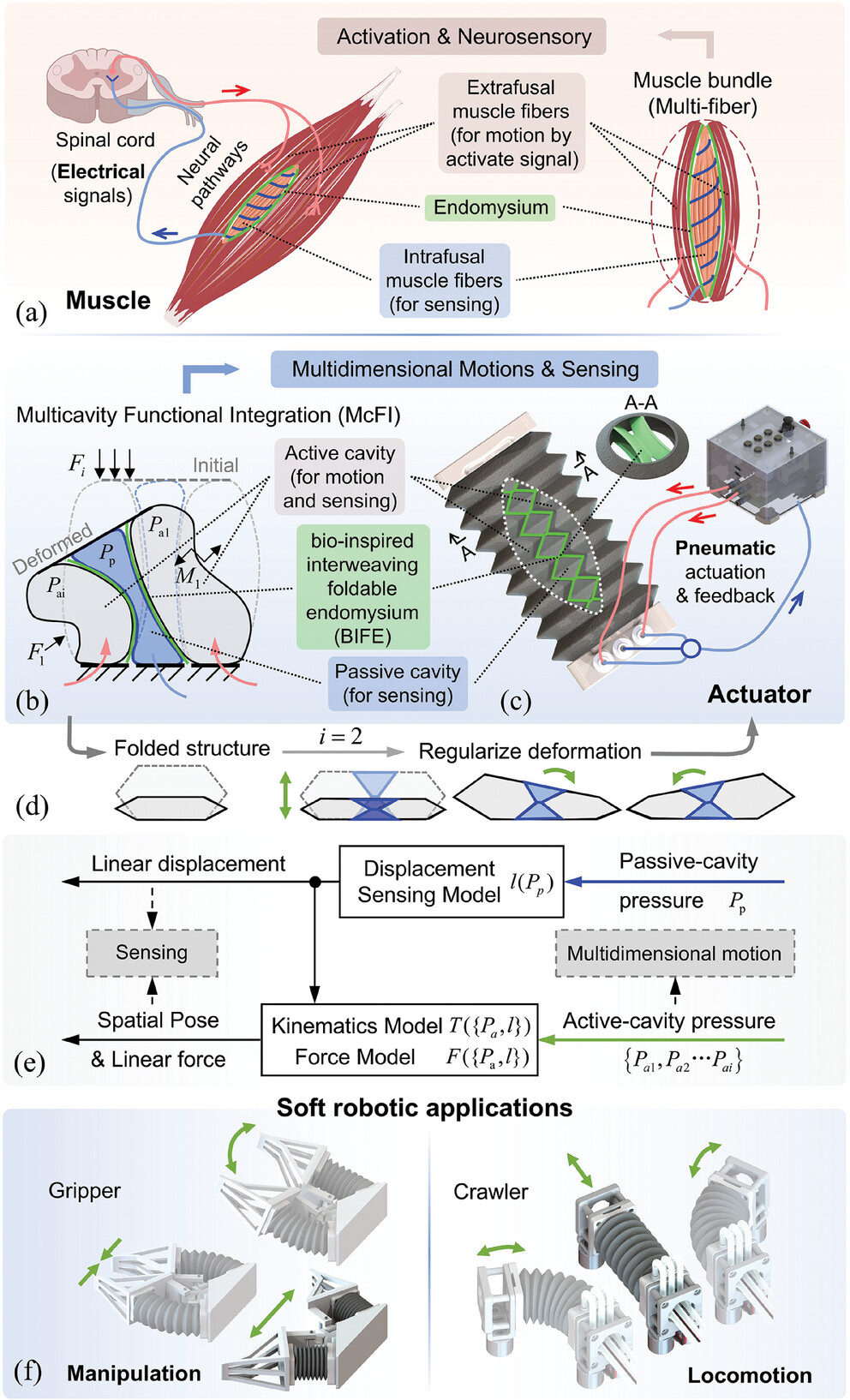https://doi.org/10.1109/TMECH.2020.3045476
Abstract:
Wearable robotic devices are receiving rapidly growing attentions for human-centered scenarios from medical, rehabilitation, to industrial applications. Supernumerary robotic limbs have been widely investigated for the augmentation of human limb functions, both as fingers and manipulator arms. Soft robotics offers an alternative approach to conventional motor-driven robot limbs toward safer and lighter systems, while pioneering soft supernumerary limbs are strongly limited in payload and dexterity by the soft robotic design approach, as well as the fabrication techniques. In this article, we proposed a wearable supernumerary soft robot for the human forearm, inspired by the fore flippers of otariids (eared seals). A flat flipper design was adopted, differing from the finger- or arm-shaped state-of-the-art works, with multiple soft actuators embedded as different joints for manipulation dexterity. The soft actuators were designed following origami (paper folding) patterns, reinforced by kirigami (paper cutting) fabrics. With this new approach, the proposed soft flipper incorporated eight independent muscles, achieving over 20 times payload to self-weight ratio, while weighing less than 500 g. The versatility, dexterity, and payload capability were experimentally demonstrated using a fabricated prototype with proprietary actuation and control. This article demonstrates the feasibility and unique advantages of origami + kirigami soft robots as a new approach to strong, dexterous, and yet safe and lightweight wearable robotic devices.
